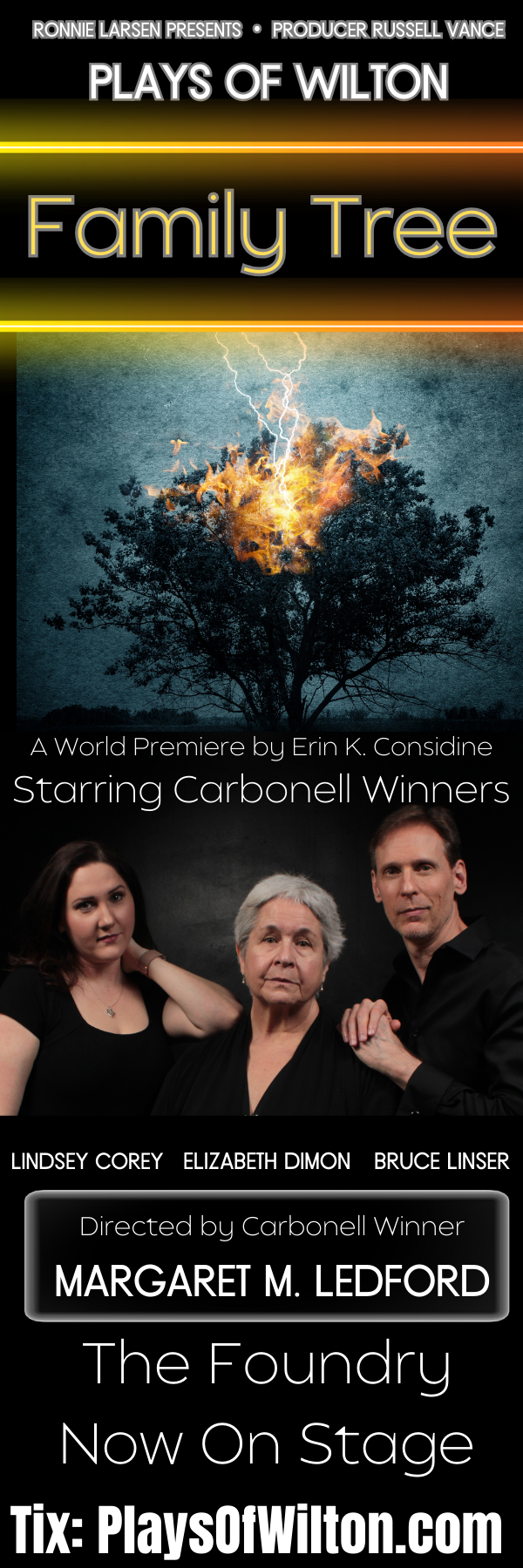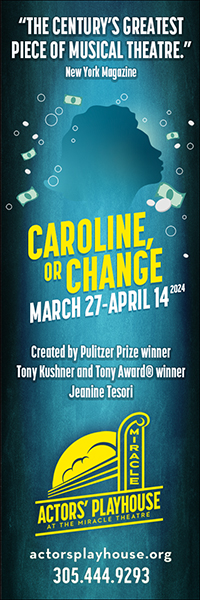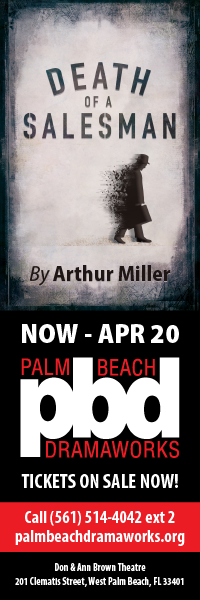By Bill Hirschman
When the callow king rouses the troops before the Battle of Agincourt with the St. Crispin’s Day speech in New Theatre’s Henry V on opening night Saturday, audiences will not face the visage of a white Anglo Saxon hunk like Kenneth Branagh or Laurence Olivier.
The young monarch will be portrayed by Sipiwe Moyo, a black actress with family roots in Zimbabwe.
Director Ron Mangravite is banking on the audience’s imagination to accept the theatrical conceit just as they accept an actor breaking into song in a musical.
“You’re looking at a black person playing a white person, but you’re also looking at an actor in a tiny theater playing someone staring at 15,000 corpses on a battlefield,” he said.
also looking at an actor in a tiny theater playing someone staring at 15,000 corpses on a battlefield,” he said.
“If we’re doing anything, it’s not striking a blow for diversity, although I have no problem with that, but rather we’re carrying a banner for a much older kind of theater. I think we’re held hostage by this theater of realism. I’m not into that. Shakespeare is a theater of theatricality.”
But it’s also a sign of evolving norms in South Florida theater. Color-blind casting and gender neutral casting are becoming more common. It’s partly an inescapable by-product of a multi-ethnic acting pool and audience demographics in a region where interracial families and diverse workforces are too common to even be noticed. On Florida stages, there have been a black Brutus and Hispanic orphans in Oliver.
But the challenge was tossed last winter into the faces of that most traditional of Florida audiences — subscribers to the Broadway Across America season — at the 25th anniversary tour of Les Miserables at the Broward Center. Lawrence Clayton became the first African-American to play the iconic Gallic protagonist Jean Valjean in a major production.
A few patrons were uncomfortable seeing a black man in those opening scenes of slavery. Some carped that Eponine grows up from a little white girl in the first act into a stunning beautiful black woman in the second act. And how could the single-minded Javert fail to notice that one well-dressed black man in the streets of Paris?
But the warm response overall seemed to indicate that mainstream audiences have begun accepting color-blind casting.
Clayton dealt with skepticism as he has toured. When audiences see him at first, he said, “I can sometimes feel the people going ‘Oh!’ But the moment passes. If you set it up right and you’re consistent and not apologetic, people will settle down after a while and get used to it. All I can do is play the story with honesty and thoughtfulness and with the dignity of that man.”
Suspension of disbelief
Suspension of disbelief has always been a pillar of theater, said Chasten Harmon, the black woman who played Eponine. With color-blind casting “they just have to suspend it a little further,” she said.
There’s still resistance among some people, Louis Tyrrell, former producing director of Florida Stage said last spring. “You see a little of that. But I’m always surprised today when I see a 19th century reaction in the 21st century.”
A few people who did not want their names used also suspect some audience members are bothered by the phenomenon, but won’t object publicly for fear of appearing politically incorrect.
Yet in the end, directors and actors said, all that matters is whether the audience emotionally loses themselves in the story or are intellectually stimulated by the choices. “If it works, everything is wide open,” Tyrrell said.
Color-blind casting and gender-blind casting take several forms. In some cases, a play is completely counter-cast such as the all-black Death of a Salesman starring Charles S. Dutton at Yale Rep in 2009. The East West Players in Los Angeles cast only Asian-American actors in shows such as Sweeney Todd and Crimes of the Heart.
Other times, a producer and director hire a star to attract ticket sales because audiences want to see what a great actor does with a part, such as Denzel Washington playing Brutus in Julius Caesar on Broadway in 2005.
Sometimes, the director just wants to hire the best actor for the job. To stay within the local acting pool means looking beyond ethnicity, said Ricky J. Martinez, artistic director of New Theatre. Its 2004 production of King Lear starred African American James B. Randolph II with three daughters of different ethnicities.
But other times, the racial or gender difference is a deliberate choice to underscore the universality of the themes. Diane Venora delivered an acclaimed Hamlet for the Joe Papp’s Public Theatre in 1982 and Blair Brown played Prosper(a) in The Tempest in 2003 at the McCarter Theater in New Jersey. In the Oregon Shakespeare Festival’s Julius Caesar this summer, the emperor of Rome was not only played by a woman but re-envisioned as a woman.
“I don’t think you want them blind at all; you want them to see it and get over it,” Martinez said. “I think you go to the theater to be entertained, surprised and challenged.”
Admittedly, Shakespeare is easier to color-blind cast because his themes speak to the common experiences of all humanity, because there is a modern tradition of color-blind casting in the classics, and because the playwright is not around to object.
But Mangravite, a veteran stage and theater director and actor, disagrees. “We have certain preconceptions what Shakespeare ought to be; I don’t think Shakespeare did.”
But even more common is the casting of minority actors in roles in which race simply isn’t mentioned in the script. Several new play scripts spell out that a part can be played by someone of any race. Tyrrell cast a black actor as one of the youths obsessed with cyber-gaming in last winter’s reading of Deborah Zoe Laufer’s new play Leveling Up because it’s not unusual for a group of friends to be interracial.
Les Miz’s creative staff took that another step. The interracial casting was meant to give this re-imagined edition a more modern feel, said Clayton and Harmon.
“When (composer) Claude-Michel (Schonberg) came to visit us in rehearsal he gave us a speech that said, ‘I really want to take this piece and have people feel like I wrote it today’ ” in part by having an interracial cast, Harmon said.
After the actors were note-perfect singing the score, they were encouraged to insert a handful of vocal stylings reflecting their R&B and gospel roots — something some audience members did bristle at.
Clayton was told “You have a different musical sensibility because you are a black man. We need to free you up a bit so you can be more expressive.” Clayton noted that he only does it in five phrases, mostly in songs when he is pouring his heart out to God.
Tyrrell and others agree that audiences are more accepting of color-blind casting when the work is “once removed” from naturalistic reality: classics like Shakespeare with its heightened language, the fairy-tale world of musicals, highly stylized dramas or an iconic work like Les Miz that the audience knows so well that they aren’t necessarily trying to lose themselves in the story.
Another color-blind arena is the educational setting. Randoph frequently casts scenes without regard to ethnicity or gender when teaching at New World School of the Arts. Harmon recalled performing in The Sound of Music and as Carrie Pipperidge in Carousel when studying at New York University.
The problems occur when the casting is so jarring that it takes the audience out of the story, especially in contemporary straight plays and in Golden Age plays where race is an issue. For instance, some people admired but could not accept James Earl Jones heading an all-black cast on Broadway in Tennessee Williams’ tale of a Southern plantation family in Cat on a Hot Tin Roof in 2008.
“There are exceptions,” Randolph said. “Hoke in Driving Miss Daisy or (the brothers in) Topdog/Underdog would be a problem. But there’s no reason why Glengarry Glen Ross couldn’t be possible” with a mixed sales staff.
What few people acknowledge, though, is that few companies consider color-blind casting in reverse. “You’re not going to see a white cast doing August Wilson,” said Joe Adler, producing artistic director of GableStage in Coral Gables. “Laurence Olivier could never do Othello today and it was one of his greatest performances.”
Martinez simply doesn’t think the concerns are relevant much of the time. Being open to a new way of looking at a piece is part of a challenging theatrical experience.
“If you’re the playwright, you might have a picture in your mind. But as a producer or director, it’s up to you to challenge the playwright and see what would happen if you we go with a different race,” said Martinez, who portrayed the Fool to Randolph’s Lear. “You learn more by going contrary to what you’re supposed to do.”
Tyrrell agrees up to a point. “You’re making a contemporary statement that we live in a diverse society. Sometimes it’s important and valid to reflect ‘today’ as opposed to the historically accurate fact expressed within the context of the story.”
Adler supports color-blind casting but he warns against the unintended consequences when casting “brings in an issue that the play doesn’t mean to deal with.” Others cited color-blind casting imposing intentional or unintentional themes of racial discrimination or tension that distract from or dilute the author’s vision.
Actors have little problem with the practice. Moyo, born in Alabama and educated at New York University’s Tisch School of the Arts, sees it simply as an acting challenge.
“An actor in a role is required to research, do preparation, characterization, all these processes before you attempt any role. All of them require a jump of imagination,” said Moyo who appeared in her own one-woman play at the Arsht since moving here in January.
She and Mangravite have spent their time analyzing Henry and paid little attention to “the body I’m in and the body that Henry is in. It’s not like an elephant-in-the-room kind of thing.”
Clayton took it a step further: “I walk through the world as a man, not a black man. We bleed the same,” he said, echoing Shylock’s speech in The Merchant of Venice. “Yes, this does have some resonance because of our history. But Valjean’s just a man who is on this quest to fulfill this promise to this woman and that’s a very universal thing that’s neither white nor black nor Spanish or Asian.”
In fact, he embraces the opportunities color-blind casting opens in a profession with limited opportunities. “For actors of my age – late 40s – there are not as many jobs and this is a great gig. I wasn’t about to turn this down,” Clayton said.
But not every minority working in theater is a fan of the practice. The late playwright August Wilson repudiated it during a 1997 debate, arguing that the answer to a lack of minority roles was to write more roles and produce those plays.
Wilson said at the time, “To mount an all-black production of a ‘Death of a Salesman’ or any other play conceived for white actors as an investigation of the human condition through the specifics of white culture is to deny us our humanity, our own history.”
Color-blind casting is nothing new in American theater. Examples stretch back at least to the 1940s when Canada Lee played Bosolo in a production of John Webster’s The Duchess of Malfi. Randolph cited performances by James Earl Jones, Sidney Poitier, Brock Peters and Diahann Carroll as forerunners to his taking parts initially envisioned for white actors. Black actress Juanita Hall played the Polynesian Bloody Mary in South Pacific. The late black actress Jane White played the queen in the original Once Upon a Mattress.
In Europe, the British have used color-blind casting for so long and so frequently that few people there give it a second thought. Even in America, race has rarely interfered with casting in opera, Randolph said. “No one ever said, ‘How can Leontyne Price play this role?’ ”
Mangravite’s Henry V differs from purists’ productions in other ways. It’s set partly in medieval times, partly in modern dress. With a cast of four women and four men, most taking six parts, the gender line will be erased further; even Pistol will be played by a woman – although the sex changes will never be noted in the script or performance.
The choice was not part of his initial concept. But when Mangravite held call-back auditions, he had a surfeit of actresses with classical roles on their resumes. And a stand-out star in Moyo.
“To me, it’s very liberating to be able to cast from a pool of actors and not match people on a basis of their identity,” said Mangravite who cast a black Oberon in a 1979 production of A Midsummer Night’s Dream.
Mangravite thinks Shakespeare settled the whole issue in the opening narrator’s speech that implores the audience to use their imagination.
For ’tis your thoughts that now must deck our kings,
Carry them here and there; jumping o’er times,
Turning the accomplishment of many years
Into an hour-glass.
To the person who has to go out on stage and make us believe it, Moyo said simply, “We’re not making a statement; we’re telling a story.”
Henry V runs Aug. 26-Sept. 20 at New Theatre, 4120 Laguna Street, Coral Gables. Performances are 8 p.m. Wednesday-Saturday, 1 p.m. Sunday, 5:30 p.m. Sunday the 4th, 2:30 p.m. Saturday the 10th. Tickets are $40. Call (305) 443-5909 or visit www.new-theatre.org








 A PaperStreet Web Design
A PaperStreet Web Design

4 Responses to Color-blind casting: New Theatre’s Henry V a sign of evolving norms